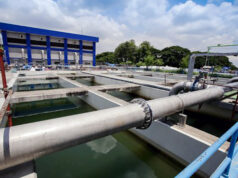
EDUCATION and support for active mobility are critical as the Philippines strives to become more climate friendly, a climate and energy policy group said.
Arturo A. Tahup, associate for community resilience at the Institute for Climate and Sustainable Cities (ICSC), called on the private sector to not only invest in renewables, but also invest in courses to help educate people in managing renewable energy (RE) systems.
“Invest in education and capacity-building courses so that we can have more trained, educated, and empowered RE technicians and engineers,” Mr. Tahup said at a virtual forum last week.
Small islands and coastal communities are said to be the most vulnerable to climate impacts. Access to electricity is also one of the pressing issues, however, Greenergy Solar PH Co-Founder Philline Marie P. Donggay said this is an opportunity “to provide clean energy systems.”
Meanwhile, Arielle Celine L. Tabinga, urban transition analyst at the ICSC, stressed that the “mobility revolution” is underway.
Citing a report by the IEA (International Energy Agency) and the International Council on Clean Transportation in 2018, she said the transport sector is the largest source of global transport emissions accounting for 24% of global carbon dioxide (CO2) emissions for the year’s study.
Nearly half or 45.1% of the emissions come from passenger road transport, which includes cars, motorcycles, buses, and taxis. It is also expected to grow at a faster rate compared with other sectors such as freight road transport, aviation, shipping, and rail, among others.
“The level of air pollution that we have… is essentially equivalent to every Filipino smoking one cigarette per day,” said Center for Research on Energy and Clean Air (CREA) Analyst Isabella L. Suarez.
She said greenhouse gas emissions also contribute to air pollution, which is said to be the “leading environmental health threat” in the Philippines. The economic impact of poor air is also affecting healthcare costs as well as the ability to work.
“The estimates are essentially equivalent to 23% of our GDP (gross domestic product) in 2019,” Ms. Suarez said. “With the level of air pollution that we are breathing and the impacts on our health and cost and spending, it’s scraping 23% of our GDP every year.”
On the other hand, ICSC’s Ms. Tabinga noted that one of the solutions to reduce CO2 emissions is a shift to the “most efficient modes,” an example of which is non-motorized transport.
The private sector, as well as the government, is urged to promote programs that enable active mobility, like cycling and walking.
“Not only does active mobility [reduce] emissions, it also taps into the concerns [and] takes into consideration [issues such as] equity and accessibility,” Ms. Tabinga said.
The Mobility Awards recognizes establishments as well as cities that are deemed “bicycle-friendly.” CREA’s Ms. Suarez said, “Companies that invest in solutions to address air pollution can simultaneously reduce their carbon footprint.”
“We believe that businesses, together with the local governments, have an essential role to play in developing programs where the ultimate aim is not defined by scale or size, but their impact on the working households in the country,” Ms. Tabinga said. — Keren Concepcion G. Valmonte



